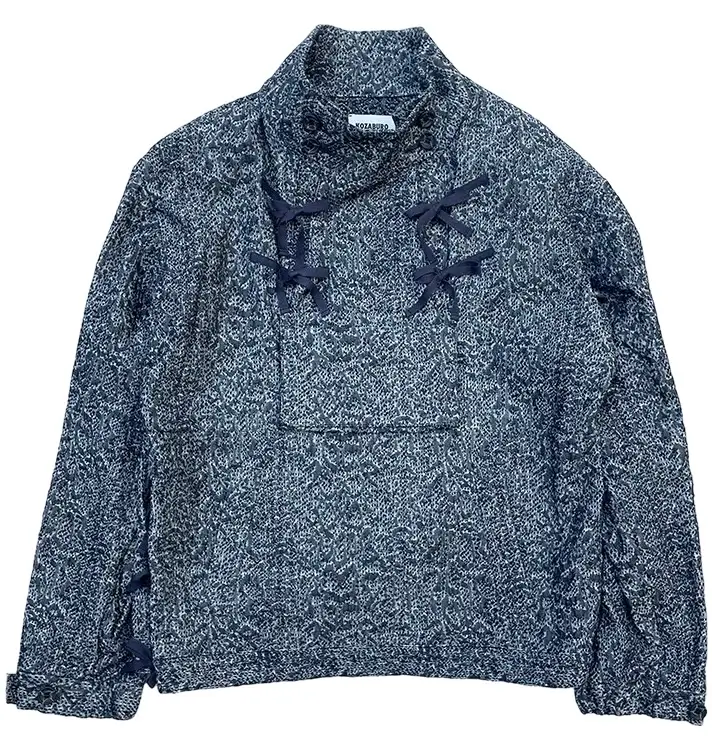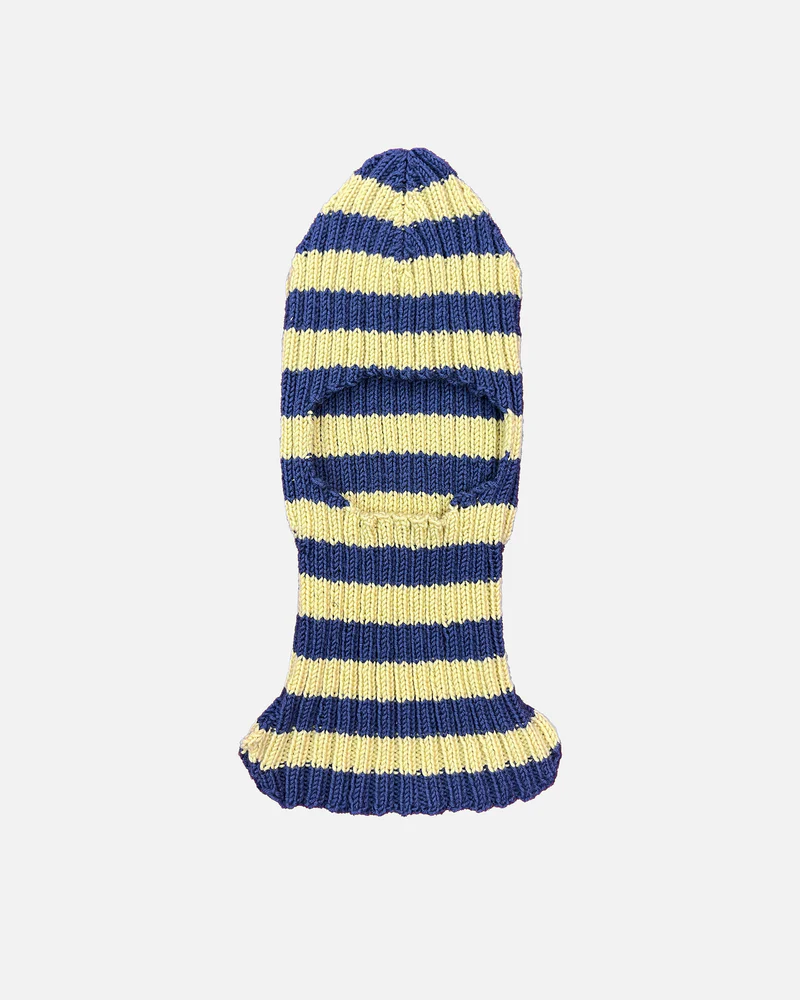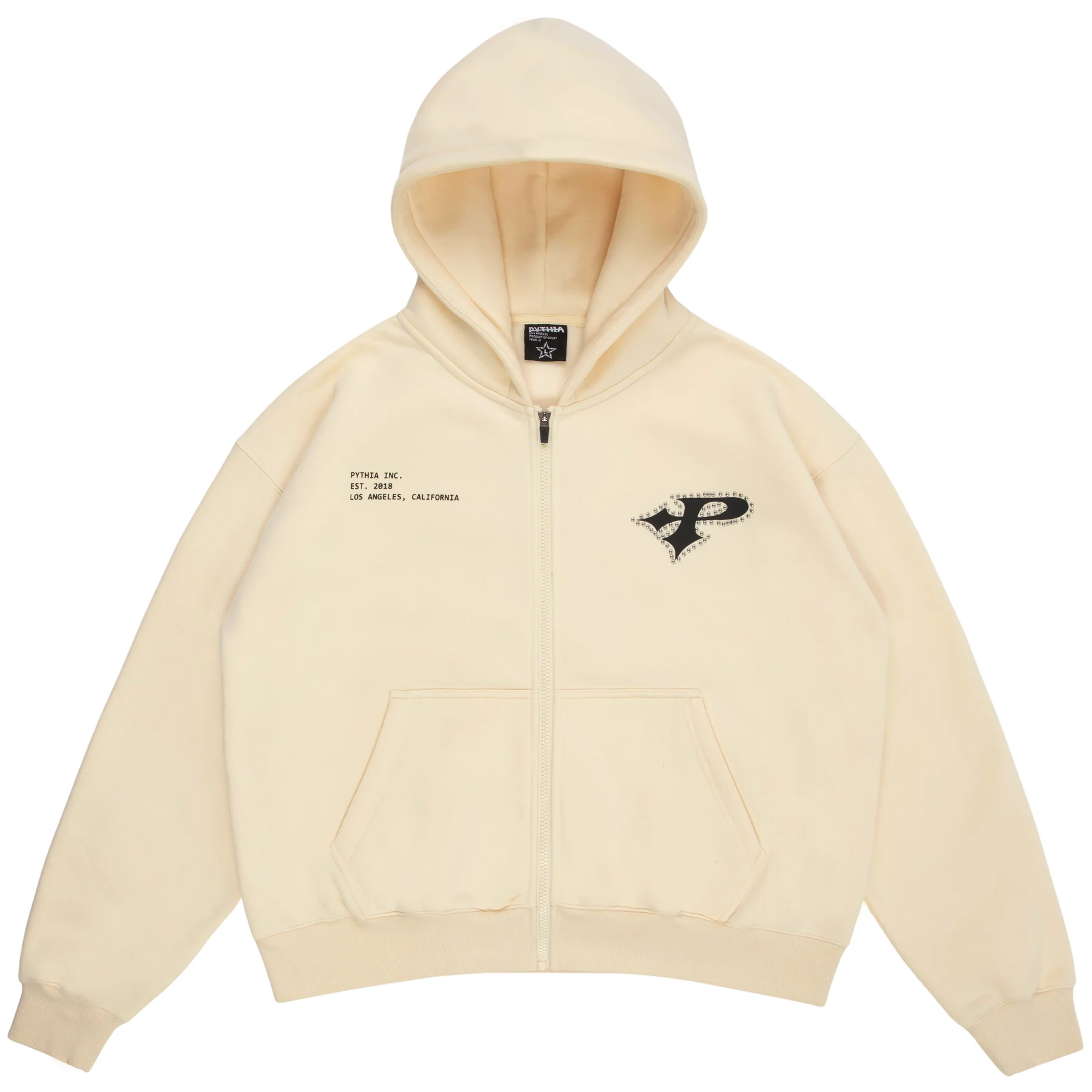In the lexicon of contemporary streetwear, Hood by Air is not merely a brand—it’s a philosophy, a defiant language coded in layers of rebellion, haute, and queered futurism. Since Shayne Oliver re-emerged into fashion’s foreground with an evolved, more sculptural vision of HBA, each drop has carried the weight of conceptual rigor with the subversive swagger of its early 2010s heyday. The Hooded Trucker Sweatshirt in Black/Green is no exception—a garment that embodies duality in color, construction, and cultural context.
This piece, part of HBA’s ongoing rearticulation of streetwear’s future, arrives as a hybrid form—equal parts outerwear and statement armor. It’s not just a hoodie. It’s not just a trucker jacket. It’s both, and neither, synthesized through the brand’s signature lens of structural distortion and socio-visual tension. The result is a garment that tells a story: of labor, of protection, of street-coded status—reforged for a post-genre audience.
Deconstructing the Form: Streetwear Tailoring with Sculptural Precision
At first glance, the Hooded Trucker Sweatshirt plays with the visual cues of two archetypes: the hooded sweatshirt (a cornerstone of American counterculture) and the denim trucker jacket (once a symbol of the working class, now an icon of rugged Americana). Oliver fuses these tropes, producing a silhouette that balances the weight and functionality of outerwear with the lived-in comfort of a pullover.
The Black/Green colorway only deepens the dimensionality. The jet-black base brings austerity and timelessness, while the verdant green panels—strategically blocked across the shoulders and hood—introduce contrast and directional movement. It’s not a decorative afterthought, but a spatial composition. These green accents function as punctuation marks within the garment’s grammar, guiding the eye along a narrative arc from crown to cuff.
Fabric choices reflect HBA’s deep understanding of tactile theory. The black body, constructed in heavyweight French terry cloth, offers volume without sag, structure without stiffness. The green overlays, executed in a waxed or coated finish, provide a slightly reflective sheen—an urban armor against monotony and predictability. The seamwork is assertive, bordering on architectural. Each stitch, each angle, carries intent.
Function Reimagined: Between Street Utility and Runway Drama
True to Oliver’s ethos, the sweatshirt oscillates between wearability and performance. Oversized but not cartoonish, the cut enables a dramatic drape while still nodding to utility. This isn’t about excess for its own sake. It’s about commanding space. The hoodie isn’t designed to disappear into the background—it’s designed to challenge, to reframe the notion of casualwear.
Details like extended sleeves with thumbholes, a hidden zip enclosure on the front placket, and a split hem at the waist further elevate the piece from simple hybrid to thoughtful object. A tonal HBA patch at the rear hem grounds the branding in subtle authority rather than loud logos—a quiet flex for those who understand the history.
Most notably, the hood—oversized, angular, double-layered—acts almost as a headpiece. When worn up, it creates an almost monastic silhouette, referencing not just anonymity but a certain sacredness to the act of dressing. In many ways, this is Oliver’s genius: transforming garments into rituals.
Material Identity: Black and Green as Cultural Semiotics
The Black/Green color palette functions beyond aesthetics. In streetwear semiotics, black is dominance, shadow, depth—a blank slate for projection. Green, on the other hand, is emergence: youthful, urgent, often used in protest and political language. Together, they form a binary that reflects Hood by Air’s fundamental tension—between control and chaos, uniformity and individuality.
Oliver has long used color not just as an adornment but as signal. This particular palette nods subtly to militarism and subculture uniforms while also suggesting regeneration. The piece resists easy classification. It could be worn in a concrete jungle or a fashion week front row. It is transitory and transcendent—just like the generation it addresses.
A Return to HBA’s Radical Roots—With New Discipline
This sweatshirt also acts as a coded reference to Hood by Air’s early DNA—an era marked by radical visibility, queer resilience, and fashion’s reawakening to underground culture. But where earlier HBA pieces roared with chaotic energy, the 2025 version shows control. Restraint. Precision.
That evolution speaks volumes. The design doesn’t just carry the spirit of rebellion—it contains it, weaponizes it, and channels it into structure. It is a garment shaped by years of cultural unrest, artistic maturity, and economic instability. In that sense, it becomes a sculpture of survival.
Wearing it is not just an aesthetic choice—it is a declaration of awareness. That you’ve been watching. That you know what HBA means. That you see clothing as both shield and signal.
Cultural Resonance: A Piece for the Now Generation
In 2025, the fashion landscape is both more open and more algorithmic than ever. Virality threatens originality. Loudness often drowns out nuance. Within this climate, the Hooded Trucker Sweatshirt in Black/Green reclaims nuance. It reminds us that quiet radicalism—executed with design integrity—can speak louder than hype.
The piece has already circulated through key cultural nodes: worn by underground musicians in zine shoots, styled on performance artists in gallery activations, and spotted in candid shots by photographers chronicling New York’s downtown. It’s not a piece for fast turnover or resale frenzy. It’s for collectors. For thinkers. For those who code-switch between style and substance.
This is, perhaps, HBA’s most powerful offering: garments that do not scream their significance but accumulate it through context, community, and lived expression.
Garment as Message, Movement, and Monument
The Hood by Air Hooded Trucker Sweatshirt in Black/Green is more than a seasonal drop—it’s a thesis statement. It consolidates the brand’s ethos of hybridization, intellectual defiance, and cultural storytelling into one wearable object. It nods to the past but isn’t stuck in it. It speaks to the present without pandering. And it builds a bridge to the future—one where identity, artistry, and fashion are not diluted but distilled.
For those who understand the difference between trend and movement, between branding and belief, HBA’s sweatshirt offers not just warmth or silhouette, but purpose. In a fashion industry still negotiating with commodification and rebellion, Shayne Oliver has once again stitched the two together—with elegance, grit, and unmatched clarity.
No comments yet.








